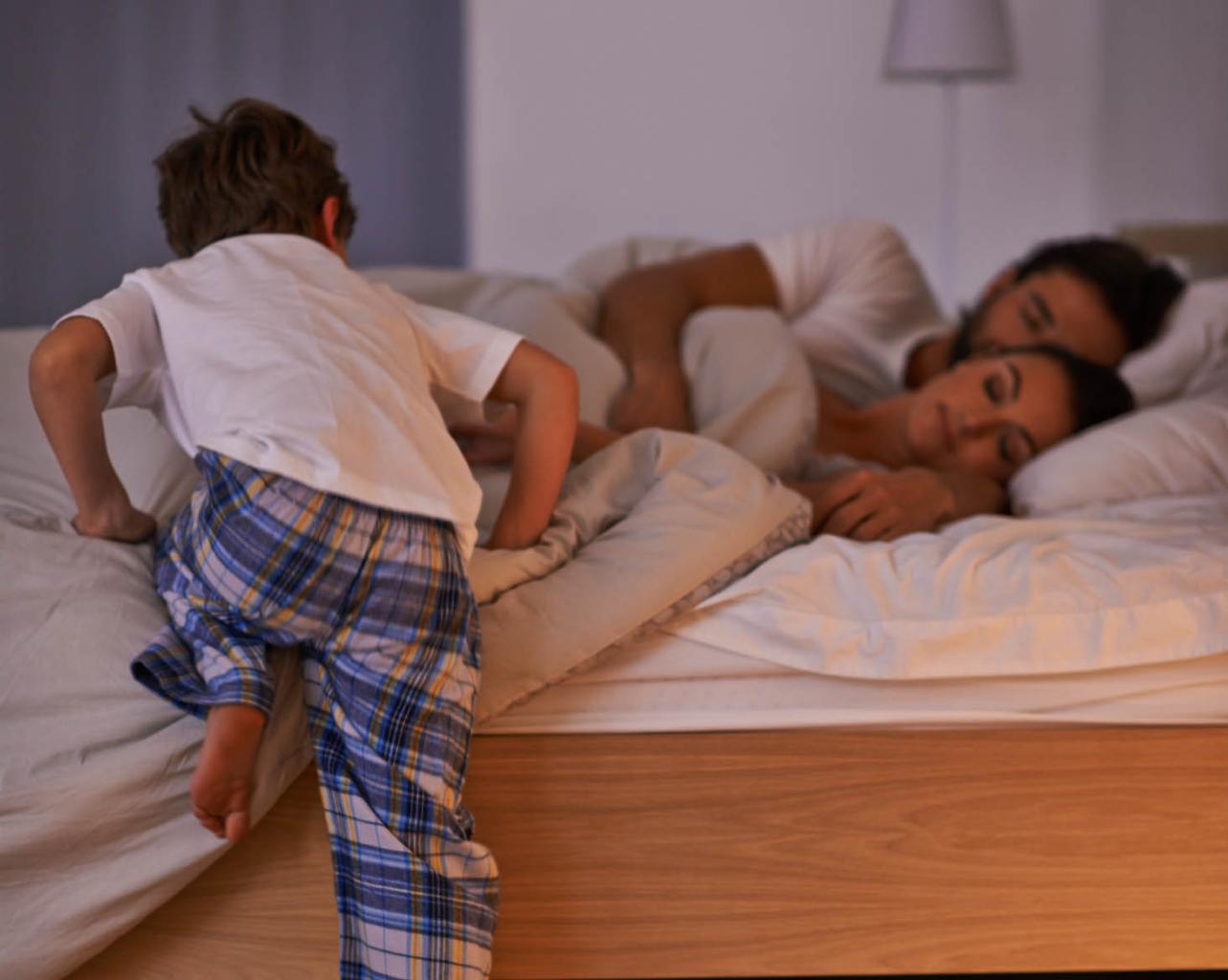
Co-sleeping is a controversial subject. Some doctors, child-rearing experts, and parents will tell you it’s the worst thing for your child. Others will tell you there is nothing better you can do for a child. You have to read and make an informed decision yourself. If you choose to co-sleep, you might find it incredibly challenging. You might find that your sleep suffers while co-sleeping. There are several reasons for this. Some parents hear and feel every movement and sound their child makes. Other parents are more sound sleepers, but their babies are too active. They get hit, kicked, and flopped on all night. If you fall into one of these categories, you might be wondering what to do at night to get your beauty rest while co-sleeping.
Use a Co-sleeper
Rather than putting the child directly in the bed with you, which can be dangerous, use a co-sleeper so that you can reach your child without getting out of bed. Co-sleepers are generally considered safer than putting your child directly in the bed with you. Many experts agree that co-sleeping is the safest solution when you want to share a bed with your child. It also keeps your child from tossing and turning in the bed with you.
Consider Shared Room Sleeping
Instead of using a special co-sleeper, you might choose to share a room instead. You can use your child’s bassinet or crib in your room. This will allow everyone to have their own space without feeling anxious about not hearing your child if they wake at night. You are still close enough to your child to attend to their every need without having to traipse around the house at 3 AM.
Use Dim Lights When Necessary
It’s inevitable—you will have to get up in the middle of the night to feed, change, or soothe your baby at some point. Don’t blind yourself or your baby. Use the least amount of light you can. If possible, use red lights or, at the very least, avoid blue, green, and white.
Minimize Noises
Use a fan or white noise machine if you can’t fall asleep without some noise. Babies should be cool to sleep anyway, so a fan blowing in the room shouldn’t be a problem; make sure it doesn’t blow directly on their faces. If that’s not sufficient, a white noise machine may help. For quiet babies, you’ll want to ensure that you can hear them over the noise. Babies do not need silence to sleep, so don’t worry about disturbing them. Your baby slept for nine months while you talked, sang, and watched television.
Only Sleep in Your Bedroom
Reading in bed may feel relaxing, but it has disturbing effects on your sleep. If you work from home and your office is in the bedroom, ensure that you avoid working within a few hours of bedtime. The same applies to your partner. They shouldn’t be working close to bedtime. Instead, read, listen to music, watch a movie, or do other relaxing activities before entering the bedroom. Email and text responses should only be in an emergency. Turn the phone off whenever possible at night.
Get Into a Sleep Routine
Establishing a consistent sleeping routine will benefit both your child and your sleep cycles. When you establish a sleep routine with your baby, they will begin to associate those actions with sleep. Believe it or not, your brain will too. When you start these routines, ensure they are easy to maintain once your baby begins sleeping in their room.
Take a Break
Making up for lost sleep is nearly impossible. You need to get a whole night’s sleep occasionally. If you have a partner, take turns sleeping away from the baby to ensure that you get a good night’s sleep now and then. You don’t have to alternate every night, but consider a whole night of uninterrupted sleep once or twice a week for each of you.
Install Bedrails
If your baby could fall from the bed, please consider using bed rails. It will help you feel safer, making it even easier to get a good night’s sleep. Sleeping safely is the top priority when co-sleeping. After all, you are choosing to co-sleep because you feel it is best for your family. Bed rails and co-sleepers enhance the safety aspect of co-sleeping with your baby.
Sleep in a Comfortable Bed
The bed should not be ultra-soft for your baby. It’s not usually good for your muscles and joints to sleep on a too-soft mattress. Ensure that your bed is neither too warm, too rigid, nor too soft. Pretend you are Goldilocks and searching for Baby Bear’s bed. It needs to be just right, firm enough that your baby is safe but soft enough that you don’t feel like you’re sleeping on boards.
Final Thoughts
You have chosen to co-sleep with your baby because it’s best for your family. Sleep-deprived co-sleeping is dangerous. We want you to be well-rested and safe, so don’t co-sleep when you feel overly tired. Some alternatives may be room sharing, using a co-sleeper, or taking turns with your partner sleeping alone to get a full night’s rest. Bed rails, co-sleeping cribs, and bassinets are considered much safer than sleeping without them. A co-sleeper can reduce the risk of SIDS by keeping the child near you without you having them directly on your bed. Remember to consider all other sleep recommendations as well. Your baby should sleep on their back in a cool room with minimal blankets and fluffy materials. Being a new mom means some level of sleep deprivation. Good luck. It gets better.
One thought on “How To Get Sleep With A Child In Bed With You”
Comments are closed.

Great read! Thank you.
We’ve always co-slept with our daughter. She also does well by herself. Her cuddles are a treat a few times a week.